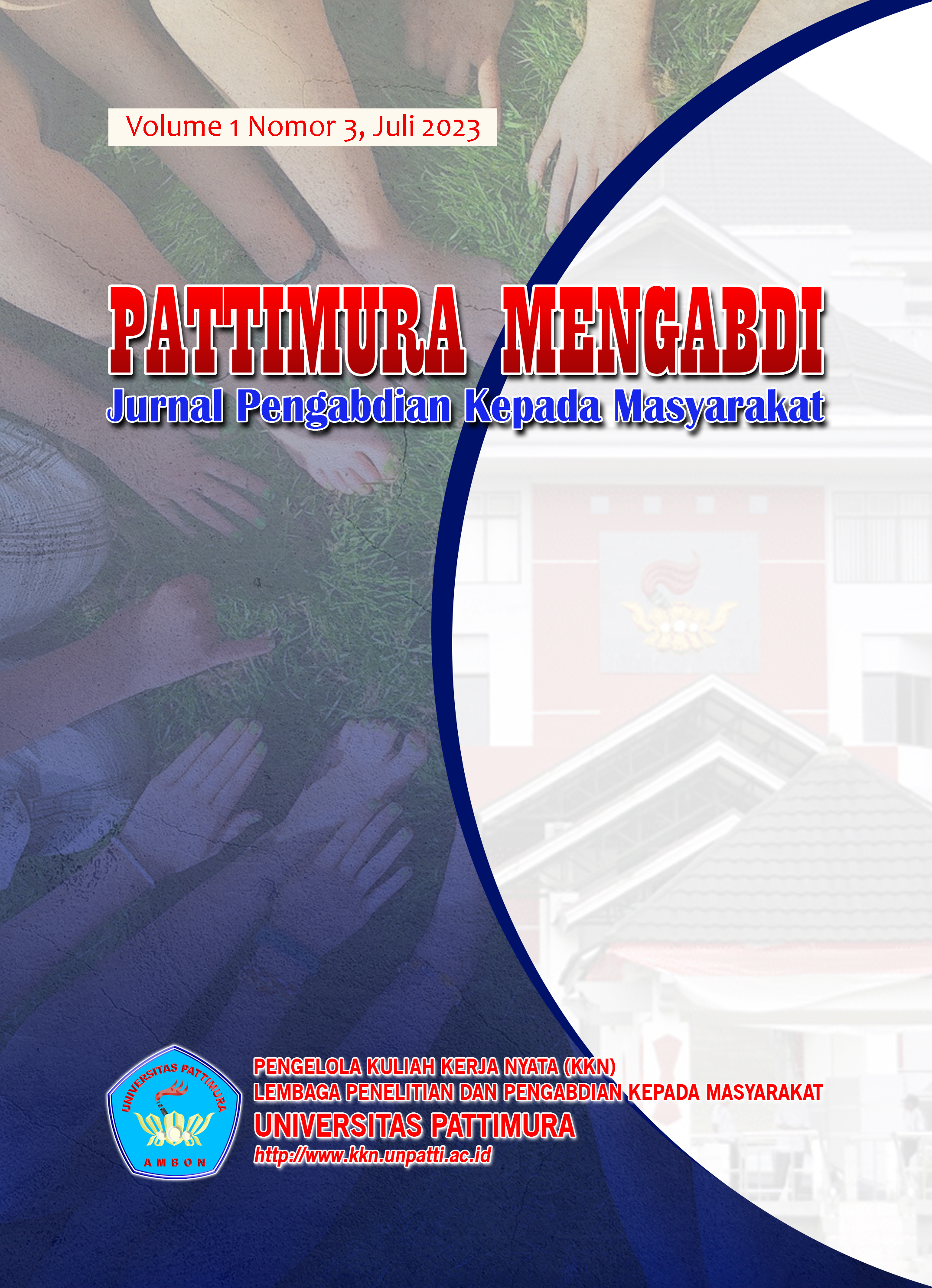SOSIALISASI PRUNING SANITASI POHON KELAPA SAWIT DI AFDELING VI WILAYAH 1 PT. NUSAINA GROUP
Abstract
Oil palm (Elaeis guineensis) is an important commodity in the national economy. The demand for national vegetable oil which continues to increase throughout the year makes this commodity popular with local and even foreign businesses. The oil from this plant is processed into CPO and KPO. Good quality oil palm fruit is inseparable from good maintenance of oil palm trees. One of the maintenance carried out is sanitation pruning of oil palm trees. Oil palm pruning activities are one of the problems faced in oil palm plantations because they consider the task to be trivial. Therefore, one way to remind farmers and employees of oil palm plantations about the importance of pruning sanitation is by empowering them to maintain oil palm trees. To support this program, socialization was carried out regarding the importance of sanitary pruning of oil palm trees in increasing production by Pattimura University Individual Thematic Community Service Students Batch XLIX Batch II Academic Year 2022/2023. One of the villages targeted for implementing this program is the village of Waimusi, North Seram Timur Kobi District, Central Maluku Regency. This service activity uses the socialization method and direct practice in the field. The socialization process related to the importance of Sanitation Pruning Oil palm trees as one of the important objects in the maintenance of oil palm is presented in oral form, then followed by work practices in the field. The results of this activity are employees who are specifically engaged in sanitation pruning work objects
Downloads
Copyright (c) 2023 Pattimura Mengabdi : Jurnal Pengabdian Kepada Masyarakat

This work is licensed under a Creative Commons Attribution 4.0 International License.


